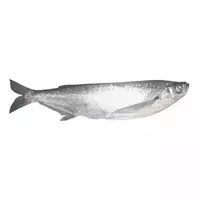Chekhon fish

Chekhon fish belongs to the semi-fertile flock fish of the carp family. However, despite this affiliation, it is largely different in appearance from other cyprinid fish. First of all, in the shape of the fish, the cheeks outwardly resemble a saber - a straight back, slightly flattened sides and a very voluminous abdomen.
Being a commercial fish, Chekhon is highly appreciated not only by fishermen for the fascinating fishing process, but also by foodies due to excellent taste. However, recently, in many areas of its habitat, the fishing of cheek fish has been officially prohibited - this representative of water bodies is under protection due to a sharp decrease in numbers. This is due to the numerous and uncontrolled fishing of Chekhon fish.
The habitat of Chekhon fish can be considered a fairly wide water space. Since fish are semi-permeable in the seas, mainly flocks of Chekhoni populate fresh reservoirs, lakes and rivers. But this does not prevent Chekhon fish from living in sea water at absolutely any level of salinity.
For culinary purposes, this fish is used quite widely due to its pleasant taste. Chekhon differs in slightly sweet meat, from the consumption of which there remains a special amazing aftertaste. But the chekhon fish has one, although small, but a significant minus - its increased bony. The calorie content of chekhoni is about 88 kcal per hundred grams of fresh meat.
Nevertheless, the delicious meat of chekhon fish contains a considerable amount of nutrient macro- and microelements, as well as vitamins. Molybdenum, nickel, zinc, fluorine, chromium and some other useful substances are present in its composition, so the use of chekhoni dishes is good for human health. It is recommended to eat even for children, however, if there are no warnings, in particular a general allergy to fish products.
It is noteworthy that it is not customary to use this fish for cooking ear, again due to its bony, low fat and insignificant calorie content of chekhoni. But it acts as an excellent product for other culinary recipes and dishes. The most popular is salted, dried and dried leapfrog. Moreover, in salty form, it turns out to be very tasty, not inferior to herring in this quality. In addition, often chekhon fish is smoked, pickled, fried, canned, baked and stewed - in general, they treat it in the same way as other types of fish.
chekhon fish 88 kKal
The energy value of chekhon fish (Ratio of proteins, fats, carbohydrates - ju):
Proteins: 17.5 (~ 70 kCal)
Fats: 2g (~ 18kCal)
Carbohydrates: 0 g (~ 0 kCal)
Energy ratio (b | y): 80% | 20% | 0%
 Español
Español Français
Français Português
Português Русский
Русский 简体中文
简体中文 繁體中文
繁體中文 日本語
日本語 한국어
한국어 العربية
العربية Türkçe
Türkçe Қазақ
Қазақ Deutsch
Deutsch Italiano
Italiano Українська
Українська
